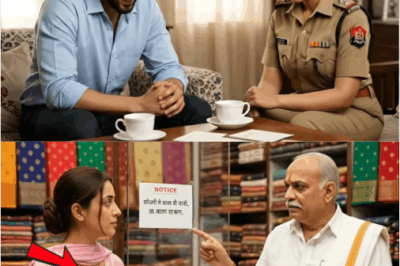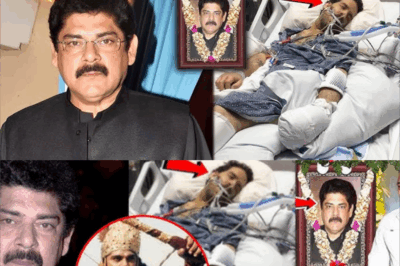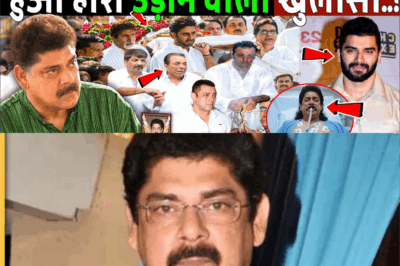Jaisalmer Bus Case: बस धूं-धूं कर जली 21 मौंते’BJP नेता की पत्नी को हेलीकॉप्टर से ले गए’!|Dharmendra
.
.
A catastrophic bus fire in Jaisalmer, Rajasthan, that tragically claimed 21 lives has ripped open the veneer of governance, exposing a stark and unsettling disparity in how the state responds to its citizens versus its political elite.
The disaster—where a seemingly new bus was instantly consumed by flames—occurred just as another contrasting piece of news emerged: the wife of Rajasthan BJP President, Madan Rathore, was swiftly evacuated via helicopter for medical attention when she fell ill in Pali.
This juxtaposition—21 citizens left to endure a five-hour road journey for critical burn care, while a politician’s family member received immediate, exclusive air transport—has ignited a firestorm of criticism, forcing a searing public debate on political privilege and accountability.

I. The Jaisalmer Horror: A Tragedy of Negligence
The horrific accident involved a new bus—reportedly on only its fourth trip—that suddenly burst into flames at 3:30 PM. Initial reports suggest the fire originated near the engine or the newly installed AC unit.
The speed of the inferno was shocking. The driver stopped the bus upon seeing smoke and went to investigate, but within “mere seconds,” the fire had engulfed the entire vehicle, trapping the 57 passengers inside. The death toll currently stands at 21, including five members of a single family.
The immediate lack of essential safety measures was quickly identified as the primary cause of the fatalities:
Inadequate Exits: The bus, likely modified from a non-AC model, had only a small, restricted gate—allegedly installed to prevent cool air from escaping.
Missing Tools: Crucially, the mandatory hammer required to break emergency glass was nowhere to be found.
Improper Windows: The emergency exit windows were reportedly not functional or proper for a swift escape.
The question of culpability rests squarely on the inspection process. The bus was new and had recently received a fitness certificate (NOC). Critics rightly demand to know which official accepted millions of rupees in bribes to issue a fitness certificate for a vehicle that was demonstrably a death trap.

II. The Cruel Disparity of Governance
The most brutal aspect of the tragedy was the government’s perceived inaction regarding immediate medical transport, especially given the catastrophic nature of burn injuries.
Jaisalmer, an area generating “billions of rupees” through tourism and massive projects by corporate giants like Adani, shockingly lacks a decent hospital. Burn victims were required to travel five hours by road to Jodhpur, drastically reducing their chances of survival.
This inaction stood in direct, painful contrast to the privilege shown to the political elite:
The Helicopter: When the wife of BJP President Madan Rathore fell ill in Pali (a location also five hours from Jaipur), a helicopter was organized in five minutes, arriving in Pali in 15 minutes, and treatment began in Jaipur within half an hour.
The Plea: Opposition leader Hanuman Beniwal powerfully articulated the outrage, asking CM Bhajan Lal Sharma: “If you could bring the BJP State President’s wife from Pali to Jaipur by helicopter, why were seriously injured citizens in Jaisalmer not airlifted to Jodhpur, especially when Army helicopters and planes are available in Jaisalmer?”
The criticism highlighted that this disparity confirms the ruling party’s “insensitivity” and shows that the government’s priority—and its resources—are allocated based on political hierarchy, not human need.
III. The Symbolic Failure of the State
The tragedy was compounded by the insensitive behavior displayed by officials and the Chief Minister himself:
A. The Disrespectful Treatment of the Deceased
Photos from the hospital were deeply disturbing. They showed the bodies of the victims—covered in white cloth—laid out on the bare ground near the Chief Minister’s presence in Jodhpur. This lack of dignity, treating the deceased as inconvenient objects, was widely condemned.
“You couldn’t give them facilities while they were alive, you couldn’t protect their rights, and even after death, they are laid out on the ground?” the commentator lamented. This public image symbolized the state’s total failure to respect its citizens, both living and dead.
B. The Political Evasion and Insensitivity
CM Bhajan Lal Sharma’s response—a generic tweet offering “deep condolences” and praying that the deceased find a place in “the feet of Lord Ram“—was called out for its shallowness.
Critics noted that the CM had issued an almost identical tweet days earlier following a fire at the SMS Hospital in Jaipur. The repeated use of spiritual platitudes in the face of systemic negligence was cited as proof of the CM’s lack of sensitivity and failure to address the structural causes of these repeated accidents.
C. Police Intimidation Against the Press
Upon the CM’s arrival at the Jodhpur hospital, the situation further deteriorated. Police officials, including the DCP, allegedly shoved and manhandled journalists who were trying to ask questions and cover the CM’s visit.
This attempt to block the press resulted in media personnel sitting in protest, asking: “How will the news reach the public when journalists are being manhandled and prevented from covering the story?” This action, meant to protect the CM from accountability, revealed the government’s attempt to control the narrative through force.
IV. The Verdict on Double-Engine Governance
The tragedy and its aftermath place a damning spotlight on the “double engine” BJP government (referencing the state and central BJP governments). Critics questioned the government’s competence: “If the police and administration are working, why are so many accidents happening?”
The official compensation—a token ₹2 lakh from the Prime Minister’s fund to the deceased and ₹50,000 for the injured—was mocked as being “like a cumin seed in a camel’s mouth” (insignificant). Demands were immediately raised for a much larger package, equivalent to previous national disasters.
The case of the Jaisalmer bus fire is not an isolated incident; similar modifications and subsequent fires are common across states (Madhya Pradesh, Gujarat, Delhi). This thieving of safety for profit—where owners maximize seats by sealing exits—is only possible due to a corrupt nexus between bus builders, owners, and the RTO officials who issue false fitness certificates.
The final demand from the opposition and the public is clear:
-
Strict Action against the officials who granted the bus its fitness certificate.
Criminal Charges against the bus owner and driver for negligence.
A complete reform of the RTO inspection system to prevent more such “death trap” buses from operating.
The Jaisalmer tragedy serves as a brutal reminder that for the common citizen in Rajasthan, the government’s indifference often makes survival a matter of mere luck, while the politically connected enjoy immediate, life-saving intervention.
.
News
गरीब वेटर समझ कर प्रेमिका ने किया अपमान… लेकिन जब पता चला वह करोड़पति है 😲 उसके बाद क्या हुआ देखिए!
गरीब वेटर समझ कर प्रेमिका ने किया अपमान… लेकिन जब पता चला वह करोड़पति है 😲 उसके बाद क्या हुआ…
सादा कपड़ों में SP मैडम साड़ी खरीदने पहुंची | दुकानदार ने पुलिस बुला ली….
सादा कपड़ों में SP मैडम साड़ी खरीदने पहुंची | दुकानदार ने पुलिस बुला ली…. यह कहानी है उत्तर प्रदेश की…
जिस दिन से मैं मेहरा परिवार की बहू बनी, मुझे पता चला कि मेरी सास से हमेशा एक अजीब सी बदबू आती थी। पहले तो मुझे लगा कि यह “किसी बूढ़े इंसान की बदबू” है, लेकिन जितना ज़्यादा मैं वहाँ रही, मैं उतनी ही डरती गई। और जब डॉक्टर कांपते हुए बोले, “तुरंत पुलिस को रिपोर्ट करो,” तो मुझे एहसास हुआ कि मैं एक भयानक राज़ के बीच जी रही थी। मेरी उम्र छब्बीस साल थी जब मैं मेहरा परिवार की बहू बनी। शांता, मेरी सास, एक सख्त और शांत महिला थीं, जिनकी आँखों पर हमेशा ठंडी धुंध की एक परत रहती थी। जिस दिन से मैंने लखनऊ के पुराने विला में कदम रखा, मुझे लगा कि कुछ ठीक नहीं है।
जिस दिन से मैं मेहरा परिवार की बहू बनी, मुझे पता चला कि मेरी सास से हमेशा एक अजीब सी…
नहीं रहे महाभारत के कर्ण, ऐसी दिखी अंतिम तस्वीर! Pankaj Dheer Passed Away ! Mahabharat Karan Death
नहीं रहे महाभारत के कर्ण, ऐसी दिखी अंतिम तस्वीर! Pankaj Dheer Passed Away ! Mahabharat Karan Death . . 🌟…
Katrina Kaif Delivered A Baby Girl Through C Section After Grand Baby Gender Reveal Party
Katrina Kaif Delivered A Baby Girl Through C Section After Grand Baby Gender Reveal Party . . 🍼 Bollywood Joy…
बेटा ही बना मौत का कारण, हुआ होश उड़ाने वाला खुलासा! Shocking Revelation Pankaj Dhir Death
बेटा ही बना मौत का कारण, हुआ होश उड़ाने वाला खुलासा! Shocking Revelation Pankaj Dhir Death . . 💔 The…
End of content
No more pages to load












